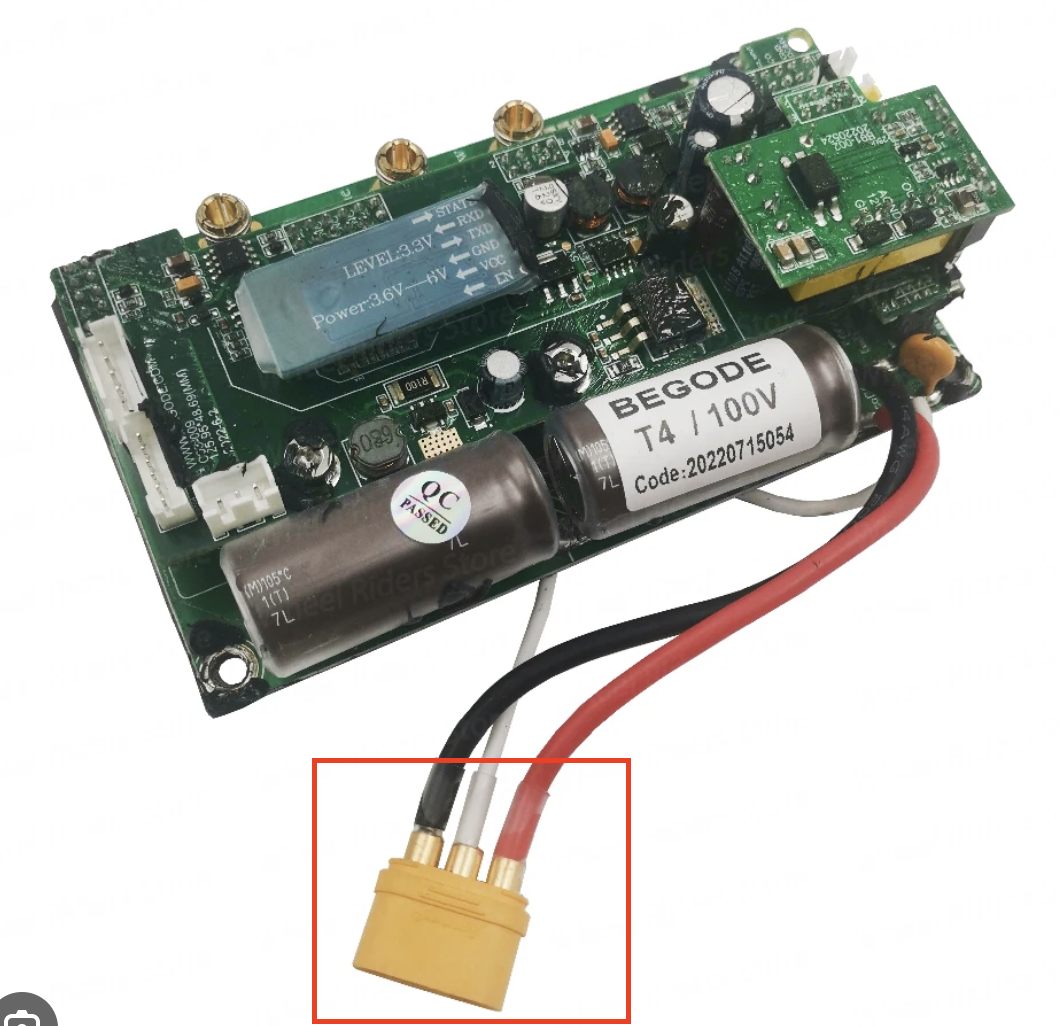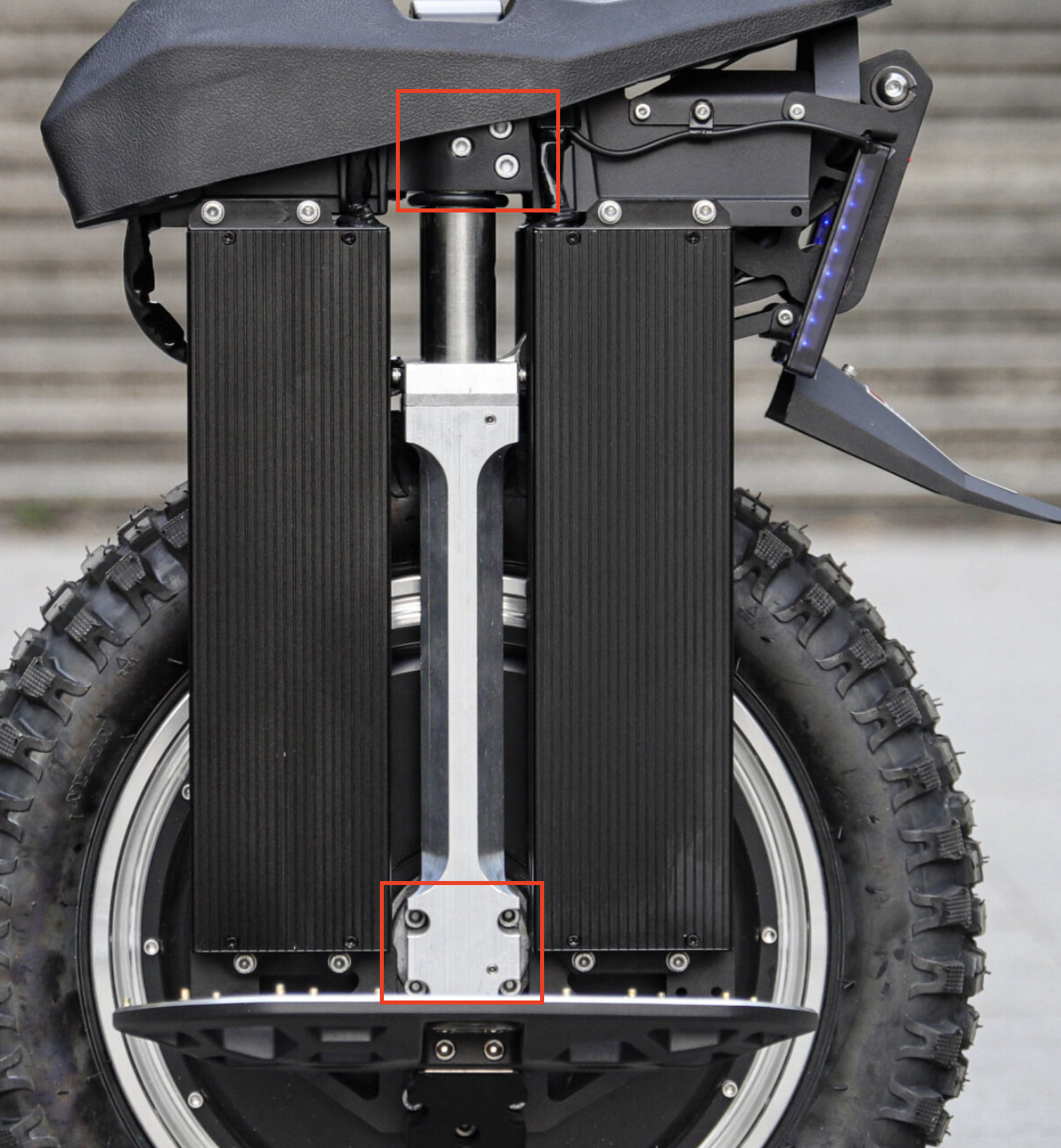Begode T4 vibration in motor issueUpdated 2 years ago
- The central "loop" that enables self balancing happens in the controller, where a finely tuned gyroscope reads how far out of balance the wheel is, and then applies power to the motor to "correct" that error - resulting in the forward or backward motion of the EUC.
- One common error is when the controller board itself becomes loose, which in turn creates more vibration. The gryoscope picks up on this vibration as some amount of error that needs to be corrected, and feeds power to the motor (really quickly forward and backwards, like we see in your video) which then has a compounding effect of making more vibration and causing even more issue.
With that in mind, the first step is to tighten down the controller and any components that connect it to the motor itself, in an attempt to reduce the extra vibration. Here's a couple tips for the Begode T4 on what to check:
External components tightening
Before opening up the controller, you can ensure everything else is tight that could cause a vibration.
1. See attached a side-profile picture that highlights some main screws to check for starters
2. Ensure your suspension is properly inflated - flat suspension can cause an unusual amount of vibration.
Controller tightening
1. Start by taking the top covers off. This video, started at 3:45, demonstrates how to do that: https://youtu.be/ASoY0wktQx4?feature=shared&t=225
2. Once you get the pad off, there's a plastic "lid" that goes over the controller. There are a couple screws to get that lid off, which will expose the controller itself.
3. With the controller exposed, it's important to de-energize the controller board. To do this, unplug the main power cable that goes to the controller. It's a yellow plug with a yellow, white, and black cable that goes straight to the controller. See included a picture outlining this plug to this message.
4. Once the main power cable is unplugged, press the power button on the wheel to "attempt" to turn the wheel on. This will drain any residual power out of the board itself, and it is now safe to touch.
5. Now, you can feel the board for any wiggling, and gently tighten any screws that have come loose.
6. Reinstall the battery cable, then the top covers, and you're good to go!

